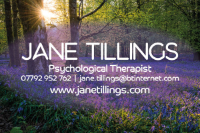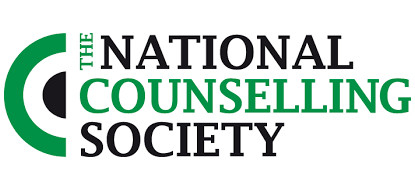Ned had a tremendous sense of humor. He delighted in telling people that he had spent his life collecting over a thousand jokes. “And that’s not including the dirty ones,” he often admitted with only a slight blush.
At age 84, when the heart failure he had lived with for many years began rapidly progressing, however, he knew his health was no laughing matter. He had read about his condition on the internet, and even if the doctors wouldn’t say it directly, he knew he wasn’t going to outlive his difficulties. So, after valiantly trying to care for his increasingly complex medical needs at home, he decided to enter an inpatient hospice facility.
A few days later, when a member of the staff entered his room late in the evening, she noticed that Ned had been crying. Gently, she asked what was on his mind.
“All my jokes will die with me,” he quietly replied. “My grandkids will never get to hear them.”
In my university course on grief and loss, I often ask students to reflect on what they think Ned was feeling at that moment. Their answer is generally right on the mark: “Hopelessness,” they often tell me. But, then, when I ask them whether it would be possible for Ned ever to feel hopeful again, I have to disagree when many of them say “no.” “But he has a terminal illness,” they object. “There is no hope!”
I suspect that what my students mean by “there is no hope,” is actually “there is no cure.” In a story like Ned’s, it's easy to equate hope with cure. But it’s an equation that I question.
My students aren’t alone in drawing an equivalence between hope and cure, of course. It’s an assumption that’s also common in the medical system. Just as people often feel they need to trade their normal identity as a “person” for a new identity as a “patient” when they enter the medical system, they also may end up inadvertently trading a more expansive definition of hope for one equated only with cure.
And who could blame them? When someone has been diagnosed with a potentially fatal illness, it’s normal and natural to hope to be cured. Given advances in modern medicine, hope for a cure (or at least relatively long-term survival) is very possible for many people. Taking cancer as one example, research shows that the average 5-year survival rate has been rising. In fact, considering all of the most common types of cancer together, roughly 67 percent of people, on average, now survive five years or more. Many other serious illnesses are increasingly treatable, as well.
But the equation between hope and cure can also be problematic. In particular, research suggests that when physicians equate hope and cure, this may hold them back from having open and honest conversations with patients about their prognosis, fearing that such truthfulness may destroy patients’ hope.
There’s nothing inherently wrong with wanting to preserve hope, of course. And yet, not honestly discussing the facts can inadvertently deny people who truly are terminally ill the time and space to emotionally prepare themselves and their families. As journalist Muiris Houston wrote in the Irish Times, “No one wants a doctor who takes away our hope. . . . However, there are hopes—and there are unrealistic hopes.”
When a cure isn’t possible despite the best efforts of doctors and patients, it seems problematic to withhold honest discussion in the service of preserving hope. And it seems unjust to suggest that hope is simply no longer something these patients can have. For these reasons, we need a definition of hope that doesn’t equate it with a cure.
Lucky, there is one. About three decades ago, psychologist C. R. Snyder took a novel, grass-roots approach to developing a new definition of hope. He sought a definition that could potentially apply to anyone. He approached community leaders, including clergy, educators, and business leaders, and asked them to name the most hopeful people they knew using whatever definitions of hope they wanted. Then, he interviewed as many people on their lists as he could.
He discovered that these hopeful people shared three things in common. Although Snyder called these the three “components” of hope, I’ve come to call them the three conditions for hope to thrive: goals, pathways, and agency. Almost three decades later, dozens of studies show that people who have these conditions set in their lives experience lower anxiety and depression, achieve their goals more readily, cope better with negative events, and even feel that their lives are more meaningful, than those missing one or more of them.
The first condition is to have something to hope for: a goal. Goals can be anything that we desire to get, do, be, experience, or create. They can be in any area of life, ranging from practical objectives like getting a raise to relational and even spiritual aspirations like being a more loving partner or having a stronger relationship with the divine.
The second condition involves the ability to generate pathways. A pathway is a strategy or plan that we believe will help us achieve a goal. While pathways can be simple or complex, the important thing for hope to thrive is to do something—anything—that could positively contribute to achieving our goals. When people don’t have pathways or don’t act on them, they often wind up feeling hopeless.
The final condition for hope to thrive involves personal agency. Agency consists of the beliefs that push us to keep striving for our goals. As in Watty Piper’s beloved children’s story, The Little Engine That Could, when we tell ourselves things like “I think I can,” we fuel our hope and motivate ourselves to act. This sense of agency can also be buoyed up by the love, care, and support of those around us, who sometimes may believe in us more than we do.
According to this view, hope isn’t abstract or ephemeral, and it’s not only about a cure. These conditions can exist in the lives of people like Ned, for whom a cure is no longer possible. Hope can exist whenever someone has a goal that is meaningful, believes pathways can be found that lead to that goal, and feels empowered by personal agency. This kind of hope isn’t a magical cure, of course, and having it doesn’t erase all of one’s problems. As much as we all wish we had a formula for ridding the world of illnesses like Ned's, we sadly do not. But this view shows us that hope is still possible, even in the midst of incredibly hard situations, something the rest of Ned's story illustrates.
When the staff member heard Ned say that he feared his jokes might die with him, she suggested that he begin writing them down. Seeing that he didn’t have anything to write on, she went out and bought him a notebook and pen. Over the course of the next several days, he filled every page of that notebook with jokes. As he did, his mood shifted, and he found himself feeling joy for the first time in months.
Then, Ned had an idea. “I want to give a stand-up comedy act,” he told his doctor. It was a request that the care team quickly agreed to. For days, Ned vigorously prepared, even rehearsing while looking at himself in a portable shaving mirror. Then, 36 hours later, came his big moment. Ned’s bed was wheeled into the hallway, where most of the staff, many patients, and even some family members had gathered to hear his routine. And, for the next 15 minutes, they laughed, and laughed, and laughed.
At that moment and the days leading up to it, Ned had set the three conditions for hope to thrive. With the help of the hospice staff, he had a goal that was truly meaningful to him, a way to get there, and the agency to make it happen. It was an experience no one present would ever forget.
Ned passed away peacefully a little more than a week later. In the days leading up to his death, however, he told everyone who would listen about his triumphant comedy act. He knew that he had given his audience the most meaningful gift he could imagine, and he beamed with hope in a situation that many would consider hopeless.
Key Points
- Medical providers often equate “hope” with “cure,” overlooking that hope is a much broader concept and can exist even when a cure isn’t possible.
- Psychology research shows that hope can exist whenever three conditions—known as goals, pathways, and agency—are set in someone's life.
- These conditions can exist even in the lives of people with terminal illnesses.











